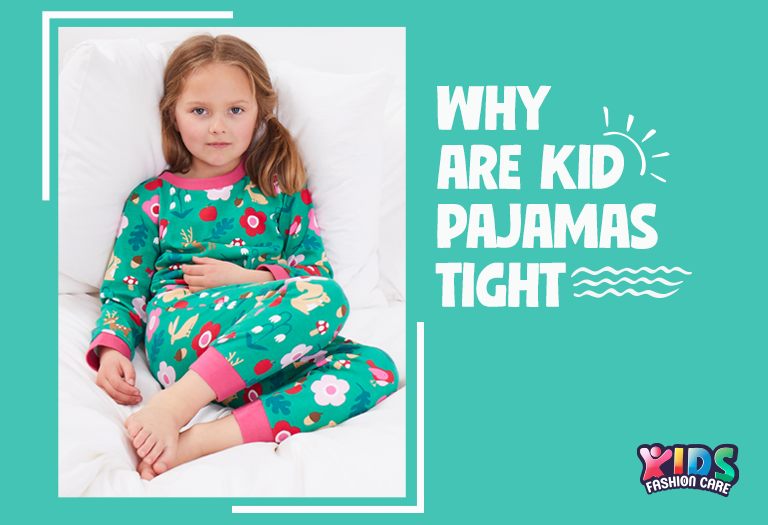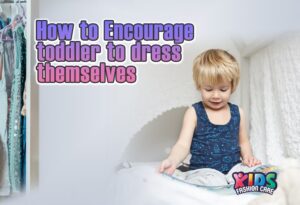Kids’ pajamas are tight due to fulfilling several purposes, such as working as flame resistant in case of fire accidents, ensuring airflow inside the leg without a chilly feeling, protecting their tiny legs, and ensuring comfort.
Table of Contents
Introductions
Pajamas are one of the essential clothing.
But, I wonder why these items look tight-fitting.
In this article, you will learn about why this toddler textile is tight, the impacts it has, and what you need to consider to find the right fitting pajamas for kids.
Let’s clarify this confusion. Why are kid pajamas tight.
Why are children’s pajamas tight?
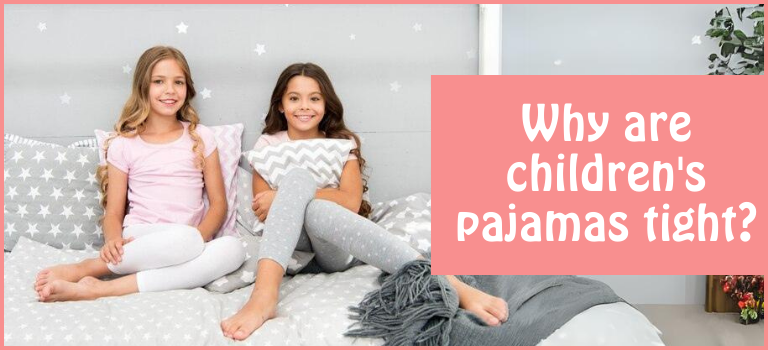
Tight ones have demands as well. Therefore, child clothing product manufacturers design and make tight and snug-fitting pajamas for the following reasons.
Safety-wearing
Tight-fitting pajamas are an item of safe clothing for children. Loose pajamas are more likely to catch fire easily in which case a tight pajama offers more safety. As the fabric sticks close to the skin, it works as a fire resistant, there is less chance for the flame to ignite easily.
Comfort
Children wearing snug-fitting pajamas are comfortable, considering they stay in position. Snug-fit pajamas are tight and stretchy, so they are not suffocating.
Facilitates movements
This type of pajama helps the baby walk, run, or do his/her activities naturally without restricting their movements, which is often the case for a loose-fitting one. Also, it is perfect as children’s sleepwear, as this item doesn’t get tangled with anything.
Impact on children’s health
Tight-fitting pajamas have some health impacts on children which are both positive and negative. Let’s get to know those.
Let’s check the positive impacts of a child’s health in wearing tight pajamas.
- Ensures better sleep
Comfortable pjs put the body at rest, a comfortable pajama snugly fits on a baby’s body and ensures an optimal relaxing feeling. So, wearing this while sleeping doesn’t disrupt the baby.
- Safety to lower the risk of accidents
A fitting pajama doesn’t get stuck in anything while the baby is moving. So, this item protects children from tripping or falling. Also, tight ones are less likely to get caught in a fire when there are fire accidents as it is a protective flame resistant.
- Doesn’t restrict growth
This cloth piece helps babies grow. Their regular movements like walking, running, etc are part of their daily activities. This helps grow a child’s body and bones. This fitting cloth assists them.
Here are the negative impacts of tight pajamas on a child’s health.
- Restrict airflows
Some pajama materials are very suffocating for children as they wear them, they show signs of discomfort, as the air can’t pass through the fabric.
- Too tight is risky
If the pajama is too tight for the baby, for example, if you are letting your child wear the pajama s/he wore last year, this will affect their muscle growth.
Factors influencing pajama tightness
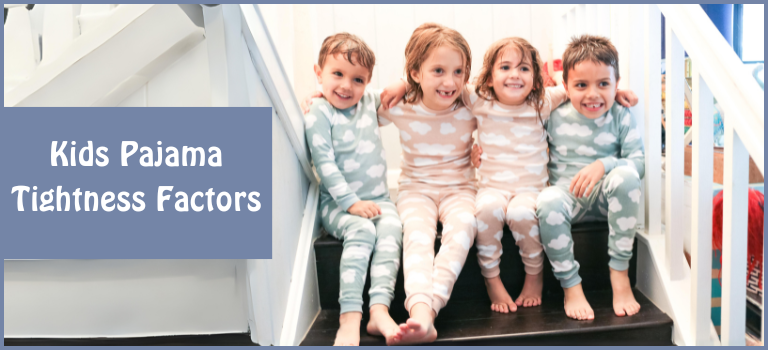
There are some factors, the presence of which tightens the kids’ textiles.
Fabric material
Children’s pajamas should be made of comfortable and soft fabrics that are recognized as kid-friendly and strong enough to support kids’ activities. Here are some of the materials,
Cotton: A natural fiber, durable, breathable, and comfortable. Organic cotton blend garments are always suitable fit.
Fleece: Extremely soft, easy to clean, and stain-resistant.
Linen: A natural material, gentle to the sensitive skin, and durable.
Design & stitching
The pajama design will not be too itchy or irritating. It may contain different patterns or drawings. Also, the pajamas will have a nice finishing seam.
Size
To find an appropriate size for your child, consider his/her age. The manufacturer of children’s clothing has their size charts available. However, it may vary depending on culture and region. Also, you may consider finding custom-sized ones for your child.
The right fit
You will understand the pajama is the right fit because it will feel comfortable on a child’s skin and it will offer comfort. More importantly, it won’t feel too tight or too loose-fitting garment on the tiny body.
Kids growth
Kids have a fast development rate. So, the item you bought last month might be closely fitting this month. That’s why many parents buy baby textiles one or 2 sizes larger.
How to choose kid pajamas for comfort?
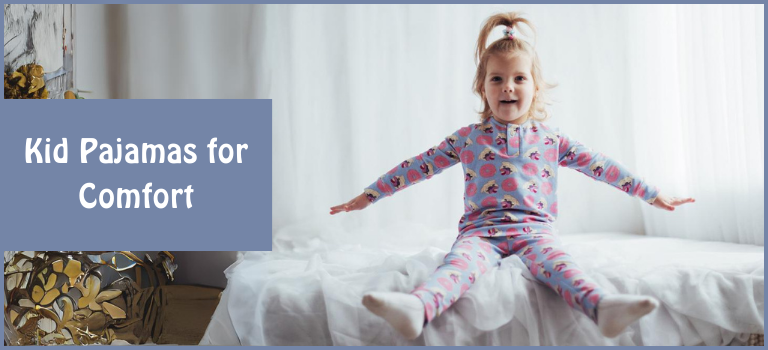
While buying this, there are several factors to consider, let’s check those out.
Fabric material: Choose breathable material for your baby’s pjs, such as bamboo, polyester, etc. These are durable, dries fast, and absorb moisture.
Right size & fit: Don’t pick loose-fitting garments or too-tight ones. To find the right fitting pajama for your baby take note of the following factors.
- Snug fit pajamas, the reason for pajamas to be snug is to ensure comfort.
- Not too tight or too loose, so that it matches the kid’s height.
- Match with the baby’s height to understand the pajama’s size.
- Supports well when the baby stands or sits.
Seams: Find well-knitted sleepwear, and make sure it has a good finish, and no loose strings attached.
Design: You can choose or ask your child for design preferences among onesies, two pieces, cowboy chaps, sleepsacks, footie rompers, footless rompers, etc.
Weather: Consider season-based sleepwear pjs, such as winter and, monsoon sleepwear will be thick fabric whereas summer fabric will be lightweight.
Have spare pairs: Keep checking their size and have a few extra pairs of baby dresses, especially in the rainy season kids tend to pee frequently.
Prioritize child’s opinion: Ask your child aged over 3 years, about their favorite design, color, and hero character.
Do a safety check: Check for legal context on flame resistance, flammability requirements, or CPSC (Consumer Product Safety Commission) regulations labels and, no small designs or parts that kids might swallow.
Avoid rayon fabric: This semi-synthetic fabric isn’t flame retardant rather it catches fire quickly also harmful to a child’s skin.
Importance of flame retardant chemicals in children’s sleepwear for child’s safety
Babies’ tragic deaths in fire hazards around the world are a concern. So, researchers discovered ways to minimize small flame incidents, such as smoke detectors. But one which is related to babies is pjs. These are comparatively soft, fit closely, and are made of loose-fitting cotton or other materials, which are sensitive to harsh chemicals, hot or cold wash, or open flame.
So, they thought to make this with flame retardant. Flame-resistant garments are made from inherently flame resistant treated with flame retardants and do not continue to burn when removed from a consumer product safety commission small flame. Therefore, this child sleepwear item is assured of national flammability standards in many countries and approved by fabrics or are, or children between the ages of 9 months to 14 months must wear tight-fitting or flame-resistant sleepwear.
However, children’s pajamas don’t include flame retardant chemicals, because, the two main common chemicals (brominated and chlorinated tris) that work as fire retardant chemicals are very dangerous and toxic elements. In 1977, researchers warned that it penetrates and mingles with DNA.
So what’s now going on is that children’s sleepwear in some countries is required to meet the flammability requirements or be tight fitting.
Countries, that have flame retardant labels, also have washing and cleaning instructions described for children’s sleepwear, for example, Canadian labeling laws. The reason is fabric softeners can increase flammability.
Understanding the need for flame-resistant pajamas that fit snugly to prevent burn injuries
The introduction of flame retardants was due to assure the child’s safety, not only whole day but also when the child is sleeping. In case a fire incident occurs where there is a child nearby, snug-fitting flame-resistant pajamas can aid. Due to its making of stretchy cotton and having an added layer of protection, it sticks closely to the child’s body. Therefore, it prevents close connection with the fire or suffering from any serious burn injuries.
Tips for adjusting
We all have that bag, stored in baby pajamas large or smaller than their size. Sometimes, we have to use those due to emergencies. So, let’s check the tips to adjust tight pajamas for kids.
- Due to the tight fitting, many children don’t want to wear this. Choose theme-based pajamas to make children habituated to wearing pajamas.
- Take your kids shopping for them. Let them choose their favorite ones.
- Buying baby clothes is always safe with the physical stores, as you can check firsthand and return if there is something mismatched. But if you are to order online, look for sellers who have a good reputation, review, and commitment to their work.
- You can buy from customized baby pjs sellers up to a certain age, take note that it might be costly.
- Keep those pants cleaned and washed. So that they stay germ-free. Follow care instructions closely. Do not wash them in hot water or dry them on heat unless the instruction says so.
- If the fabrics are stretchy, you can have your child wear them for a short period.
- For the large baby pants, do folds on the waist, and use a belt to tighten and fold the ankle parts. This will adjust the pants to the kids’ size.
- If the pajama has extra clothes inside to adjust, you can adjust the seam part with a needle and thread.
- Do not stick to using these types of pants for a long time, for they can affect kids’ natural movements.
- If a pajama is well fit but the ankle parts are somewhat short, then what you can do is add a cuff to the pajama’s hem. It will enlarge the pants a bit.
- For the pants that fit right, but kids don’t want to wear them, add decorative and simple designs to make the garments more interesting for the kids.
Frequently Asked Questions (FAQs)
Question: How can I make my kids’ pajamas smaller?
Answer: There are several smart ways to make the loose-fitting pajamas smaller. The first one is to sew it. For the loose parts, sew them appropriately as per the child’s leg measurement. Another way is to fold the pajama near the waist and ankle area. You can also use a belt to tighten the pants near the waist area.
Question: How do you loosen tight elastic on pajamas?
Answer: The straightforward simple solution is to remove the elastic from the pajama. If the leg muscle areas lack elasticity, stretch a little bit and let it loose.
Question: How many pants should a child have?
Answer: A grown-up child changes pjs frequently. So, have 6 to 8 sets of pants prepared for them.
Question: Should baby clothes be tight or loose?
Answer: Baby pajamas should neither be tight nor loose. Tight garments will suffocate them, loose garments will restrict their natural movements. So, it is recommended to find a garment that fits snugly.
Question: Why are 12-month pajamas so tight?
Answer: If your child has passed the age of 12 months, or has a good growth rate, either way, baby pants may be tight for them to wear. If you face this issue, do not pressurize. You can loosen up the seam to resize the pajama as per the baby’s legs.
Conclusion
So, now it’s clear that tight-fitting pajamas are way safer than loose-fitting ones. This type of pj doesn’t restrict kids’ natural movements, rather they are comfortable, stretchy, and snug fitting and work as flame resistant. So, now you can let your child wear pajamas without any worry.

